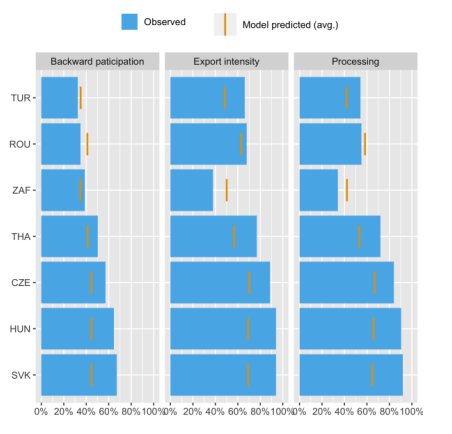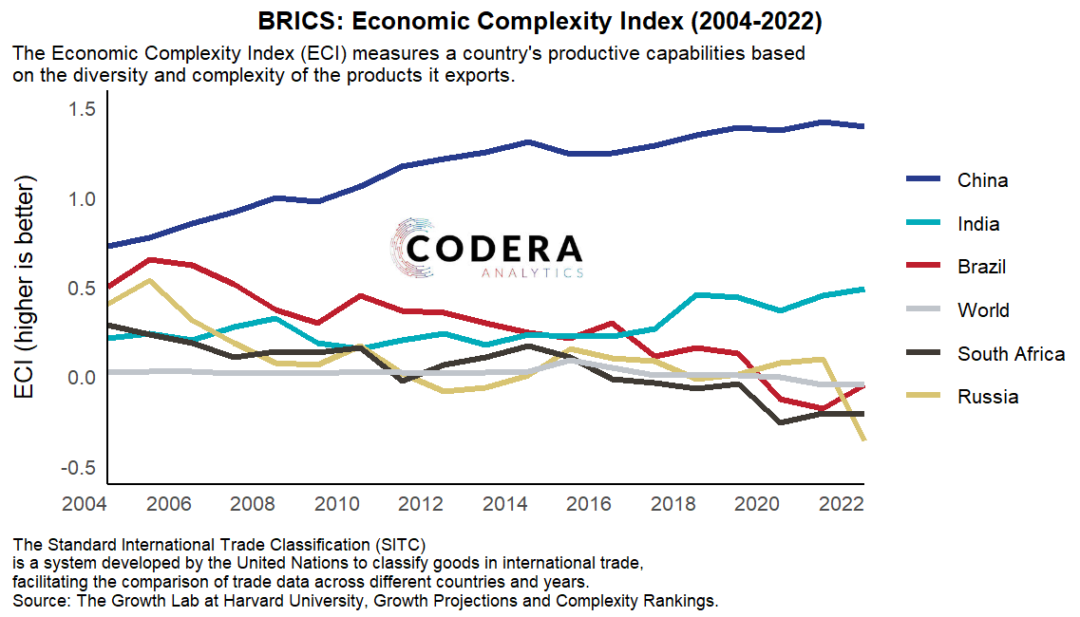South Africa’s manufacturing industry is less integrated into global value chains (GVC) than in other small open economies. A recent SARB working paper shows that South Africa’s automotive industry uses fewer inputs from foreign upstream industries in production (‘backward GVC participation’) than many of our peers. South Africa’s ‘export intensity’ (how much of domestic value added is represented in final foreign consumption of goods or services of an industry) and ‘processing’ (the quantity of imports used as intermediate inputs that are subsequently exported) are shown to be comparatively low. But our automotive industry’s integration is lower than one would expect taking into account South Africa’s economic structure, resource endowments and industrial policies (as shown in the chart).
Figure: Automotive industry’s integration (observed vs model-predicted, 2014–2018 average)

In a previous post, I suggested that the industrial incentives provided by our government to the automotive industry are very expensive. The findings in this paper suggests that industrial policies in South Africa are not helping to integrate South Africa’s production into the global economy or boost growth.

